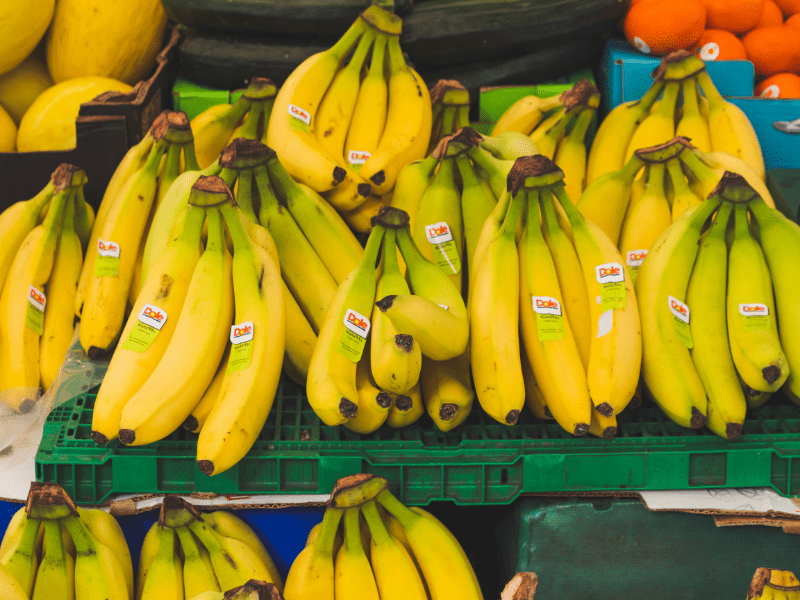When adhesives are used in Food Contact applications, they have to adhere to the relevant regulations for the country where they will be sold.
Fresh produce stickers provide an array of regulatory challenges for manufacturers and packaging suppliers. The products can be complicated; a multilayer structures consisting of adhesive, substrate, plastics layers or paper material and printing ink. In some cases, they may also use a functional barrier to prevent migration of any of the constituents into the food product.
Adhesives should not migrate from the lable to the food product in significant quantities
Any of these materials may provide cause for concern when considering the suitability for use, and must be rigorously tested to ensure both inter-component compatibility and minimal risk to the public. For plastics layers, the finished articles must comply with the overall migration limit (OML), specific migration limit (SML) and any other restrictions placed on the individual layers of each structure.
Adhesives must be able to withstand the environmental demands of the supply chain
When deciding on a suitable adhesive, it is critical to take into consideration the foreseeable conditions of use in the full supply chain; if your product is likely to be frozen or encounter high temperatures then the adhesive must be fit for purpose under these conditions.
Testing fresh produce labels for Food Contact applications
The testing process for fresh produce stickers primarily focuses on migration testing of each part of the multilayer structure:
- Adhesives
- Plastics layers
- Paper layers
- Printing ink.
A NIAS risk assessment may also need to be undertaken if these substances are found to be present in the Food Contact material.
The supply chain environment must also be considered at the testing stage; if the transit or end-use conditions are likely to chain the properties of the adhesive, it may also affect the likeliness of migration.
Meeting EU regulations
Whilst adhesives are not yet categorised as an individual group in EU regulations, they have to fulfil the demands of the EU Framework Directive 1935/2004. This specifies that Food Contact materials and articles should not migrate into food in quantities that will endanger human health, cause an unacceptable change in the food composition, or deteriorate the food’s characteristics.
A specific EU Regulation for adhesives has not yet been published. However, individual countries may have national legislative requirements for adhesives which need to be followed in order to trade there.
Meeting USA FDA regulations
Within the FDA’s Code of Federal Regulations, CFR21 §175.105 contains a list of ‘pre-approved’ adhesives which are allowed for food packaging, however, the FDA requires that these adhesives are separated from foods by a functional barrier. CFR21 §175.125 also offers a clearance route for pressure sensitive adhesives.
Alternatively, you can submit a Food Contact Notification (FCN) to the FDA to ensure that the adhesive you have is compliant for use.
Smithers offer a range of Food Contact testing services, providing specialist support for manufacturers and packaging suppliers. We can help you demonstrate regulatory compliance in all jurisdictions where it exists, including the EU and the USA.
Our UK laboratories are temperature and humidity controlled, and are UKAS, ISO 17025 accredited for a wide range of paper and plastic testing services.
Find out more about our food contact testing support.
